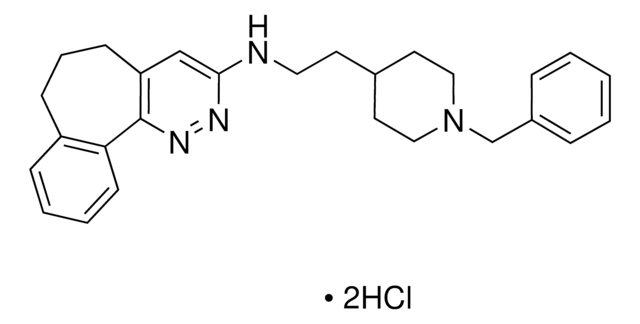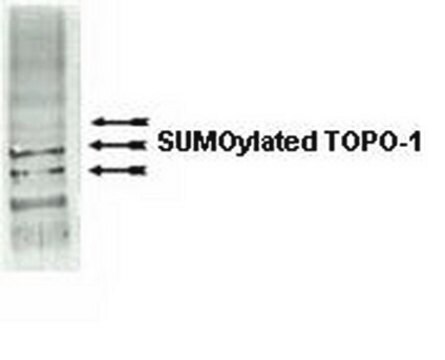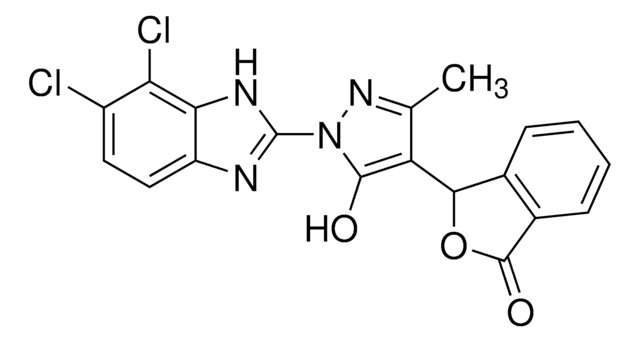SML0602
Propiverine hydrochloride
≥98% (HPLC)
Sinônimo(s):
α,α-Diphenyl-α-propoxyacetic acid hydrochloride 1-methyl-4-piperidyl ester, α-Phenyl-α-propoxybenzeneacetic acid 1-methyl-4-piperidinyl ester hydrochloride, (1-Methylpiperidin-1-ium-4-yl) 2,2-diphenyl-2-propoxyacetate chloride, 1-Methyl-4-piperidyl diphenylpropoxyacetate hydrochloride
About This Item
Produtos recomendados
Ensaio
≥98% (HPLC)
Formulário
powder
condição de armazenamento
desiccated
cor
white to beige
solubilidade
H2O: 5 mg/mL, clear (warmed)
temperatura de armazenamento
2-8°C
cadeia de caracteres SMILES
[Cl-].[N+H]1(CCC(CC1)OC(=O)C(OCCC)(c3ccccc3)c2ccccc2)C
InChI
1S/C23H29NO3.ClH/c1-3-18-26-23(19-10-6-4-7-11-19,20-12-8-5-9-13-20)22(25)27-21-14-16-24(2)17-15-21;/h4-13,21H,3,14-18H2,1-2H3;1H
chave InChI
KFUJMHHNLGCTIJ-UHFFFAOYSA-N
Descrição geral
Ações bioquímicas/fisiológicas
Características e benefícios
Palavra indicadora
Danger
Frases de perigo
Declarações de precaução
Classificações de perigo
Eye Dam. 1 - Skin Irrit. 2 - STOT SE 3
Órgãos-alvo
Respiratory system
Código de classe de armazenamento
11 - Combustible Solids
Classe de risco de água (WGK)
WGK 3
Ponto de fulgor (°F)
Not applicable
Ponto de fulgor (°C)
Not applicable
Escolha uma das versões mais recentes:
Certificados de análise (COA)
Não está vendo a versão correta?
Se precisar de uma versão específica, você pode procurar um certificado específico pelo número do lote ou da remessa.
Já possui este produto?
Encontre a documentação dos produtos que você adquiriu recentemente na biblioteca de documentos.
Artigos
Muscarinic acetylcholine receptors are G protein-coupled receptors (GPCRs) and mediate acetylcholine actions in the CNS and non-nervous tissues. Learn more about acetylcholine receptors and their role in cell signaling.
Nossa equipe de cientistas tem experiência em todas as áreas de pesquisa, incluindo Life Sciences, ciência de materiais, síntese química, cromatografia, química analítica e muitas outras.
Entre em contato com a assistência técnica








